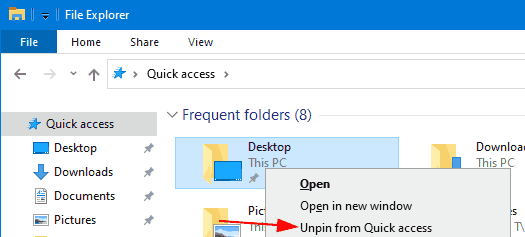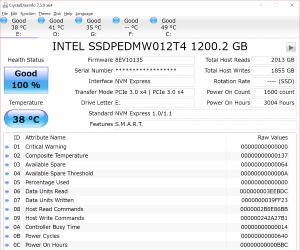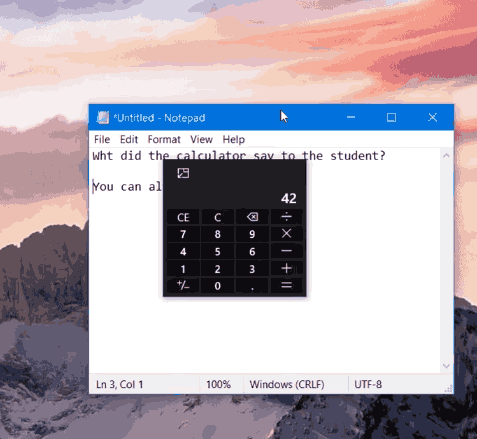This post explains various methods you can use to defragment a drive in Windows 10, including the graphical tool ‘MMC’, the console defrag command, and PowerShell.
Author: The MFTNEXT Team
Remove Frequent Folders from Quick Access in Windows 10
The File Explorer file utility in Windows 10 has a new default location called ‘Quick Access’. It shows your recently used files and folders you visit frequently. They both appear under their own groups in the Quick Access Folder.
Continue reading “Remove Frequent Folders from Quick Access in Windows 10”
Make Taskbar Icons Bigger in Windows 10
In Windows 10, Microsoft reduced the size of application icons on the taskbar to 24 x 24. Many users want the have larger icons with size of 32 x 32, similarly to what they were in Windows 7 and 8. Here is a bit of good news – it is can be done with a small freeware tool. Continue reading “Make Taskbar Icons Bigger in Windows 10”
Find Out How Old Is Your Hard Drive in Windows 10
A freeware hard drive utility called CrystalDiskInfo can be used to find how many hours a hard drive installed in your Windows 10 device have been running, and how many times it has been turned on and off. Continue reading “Find Out How Old Is Your Hard Drive in Windows 10”
Enable Always on Top Mode in Windows 10 Calculator
How to enable Always on Top Mode for Calculator in Windows 10
A new feature, Always on Top Mode, is available in the Windows 10 Calculator app. In this post, you’ll learn the steps to enable or disable the feature. Continue reading “Enable Always on Top Mode in Windows 10 Calculator”
Disable Windows Animations in Windows 10
How to Disable Windows Animations in Windows 10
You may wonder how to turn off the window animations in Windows 10. Some users do not like those effects. If you are one of them, you might want to turn them off. Luckily, you can still turn off minimizing and maximizing window effects completely. Follow the instructions in this guide.
Continue reading “Disable Windows Animations in Windows 10”
Hide The System Recovery Drive Partition in Windows 10
How To Hide The System Recovery Drive Partition in Windows 10
The Recovery partition is a special partition on the hard drive that exists on almost all OEM Windows computers. It’s created by the OEM vendors and is used for to keep OS image that these days replaces the recovery discs that used to come with new computers. If you are using an OEM computer, such as ones you bought from Dell, HP, etc., you will have a special partition available on the drive of your new computer. Continue reading “Hide The System Recovery Drive Partition in Windows 10”
How to Install Windows 10 on a UEFI Computer
How to Install Windows 10 on a UEFI (Unified Extensible Firmware Interface) Computer
If your new computer came with UEFI instead of an outdated BIOS, you can get significantly faster boot times for your Windows OS. UEFI is intended for faster hardware initialization and then delegation of the OS boot process. To take advantage of UEFI, you need to correctly install Windows in UEFI mode. Here is what you need to do for Windows 10.
Continue reading “How to Install Windows 10 on a UEFI Computer”
Find If Your PC is Ready for Windows XP Mode
How to Find If Your PC is Ready for Windows XP Mode
One of the requirements for Windows XP Mode is the virtualization support by the hardware. This exactly means that the CPU has either AMD-V or Intel VT technology supported, and it can be enabled in BIOS and supported by motherboard. You can find it by following these simple steps. Continue reading “Find If Your PC is Ready for Windows XP Mode”
List of Windows Operating System Version Numbers
Microsoft has released nine major versions since its first release in 1985. After 29 years, Windows looks very different, but still familiar with the elements that have stood the test of time, increase computing power and – most recently – move away from the keyboard and mouse on the touch screen. Continue reading “List of Windows Operating System Version Numbers”



